We are within Keith Tolch’s mind. As in, going for walks all-around.
It’s a futuristic landscape, a maze of vacant rooms with soaring ceilings and glowing, neon-lit flooring, anything bathed in an ‘80s-period palette of screaming-pink, orange and lime environmentally friendly. Random objects — a deconstructed 1967 Mustang, glass cubes brimming with swirly paint markings, delicate pencil drawings of butterflies and roosters — float by.
But, hold out. Disrobed of the plastic, padded headset, we are really in a gleaming Eagle Rock warehouse, a previous auto entire body repair service shop-turned-artists’ studio, and Tolch is perched behind a computer console, beaming.
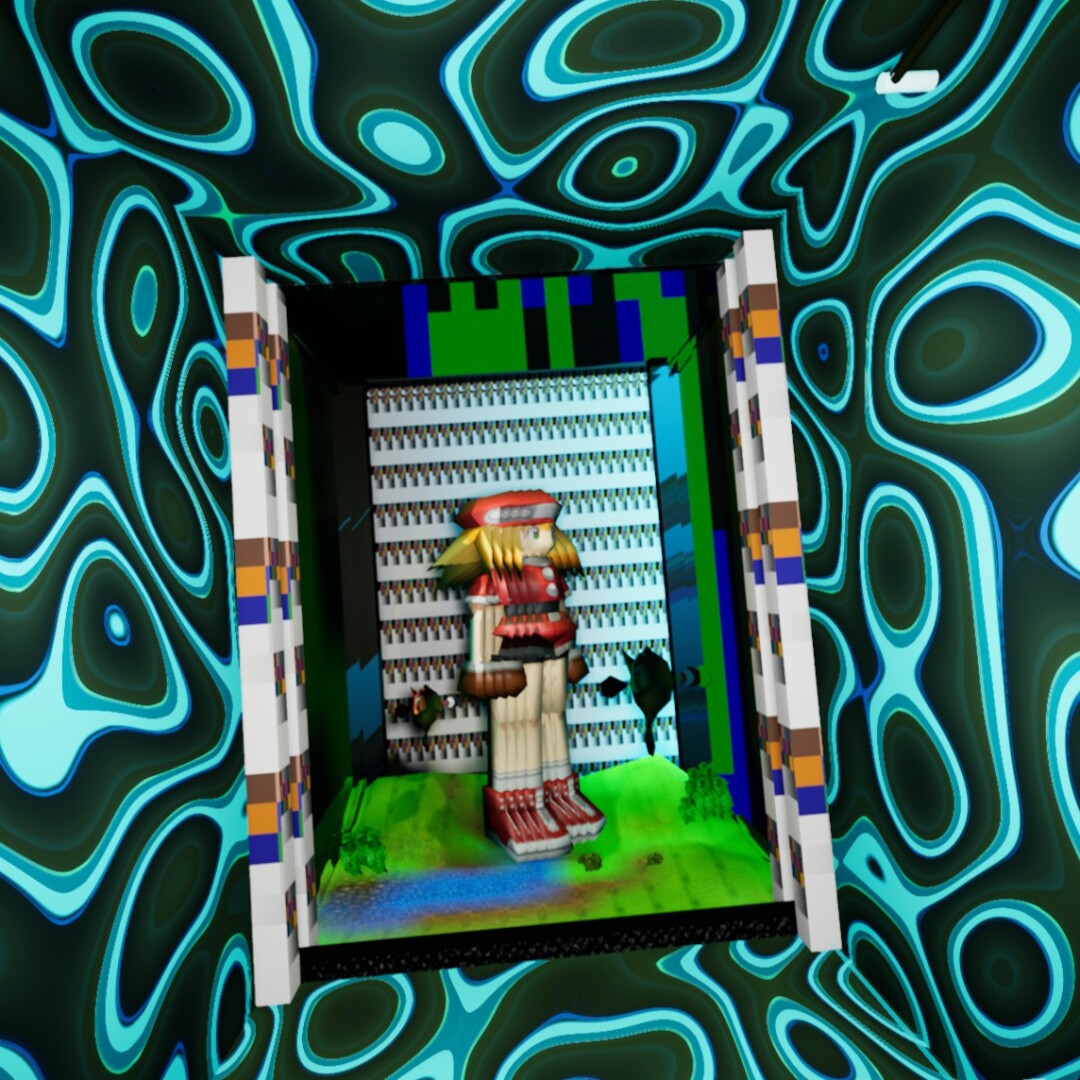
A even now from artist Keith Tolch’s interactive, digital fact artwork, “Glass Bottom Mind,” generated at Artwork Fact Studio.
(Courtesy, Keith Tolch)
His piece, “Glass Bottom Mind,” is an interactive, digital fact artwork — this means viewers don a higher-resolution headset and descend into an immersive, three-D electronic natural environment in which they can navigate by means of bits and parts of Tolch’s subconscious. He established the piece with high-priced point out-of-the-art computer tools, but Tolch did not spend a cent. The undertaking was compensated for, organized by and later on exhibited by Artwork Fact Studio, a nonprofit corporation that’s outfitting present-day artists with VR technological innovation towards pushing inventive boundaries. It sees alone as an incubation lab for slicing-edge creative imagination and asks the problem: “What if?”
“What transpires when artists are presented slicing-edge technological innovation, no strings attached?,” states ARS co-founder Frank Masi. “We wanna see how considerably they’ll just take it.”
The corporation, which formed about 2½ decades back, is a later on-in-life undertaking from Masi, a seventy seven-12 months-previous photographer and retired topic park attraction undertaking director and Brent Imai, a sixty one-12 months-previous previous athletics tv government and entrepreneur.

A even now from Keith Tolch’s VR artwork, “Glass Bottom Brain”: “An architectural, biological natural environment that you can stroll all-around in and glance at all these artifacts from my earlier.”
(Keith Tolch)
“Technology is these types of an critical portion of society,” states Imai. “It can be really, really superior, it can be really, really poor. We assumed: ‘Let’s have artists weigh in on that discussion.’”
Virtual fact technological innovation has been all-around for many years and routinely pops up in movie game titles, at topic parks and in other “experiential entertainment,” normally located at malls. Fantastic artists have been slower to undertake the technological innovation, which is high-priced and can be complicated to discover how to use for those who are not computer-savvy. But that’s started off to alter.

Frank Masi, left, and Brent Imai, co-founders of Artwork Fact Studio.
(Gabriella Angotti-Jones)
Artists Paul McCarthy, Jordan Wolfson and Jon Rafman showed VR functions in the 2017 Venice Biennale, 2017 Whitney Biennial and 2016 Berlin Biennale, respectively Laurie Anderson and Taiwanese new media artist Hsin-Chien Huang showed new VR installations during the Cannes Film Pageant in Could.
Warmth all-around VR has caught on in the museum planet: previous Moderna Museet director Daniel Birnbaum left his career at the Stockholm institution final 12 months to head up the London-dependent art and tech studio Acute Artwork, which has established VR functions with Jeff Koons and Marina Abramovic. Even in the general public art realm, L.A. artist Nancy Baker Cahill shown VR functions on electronic billboards alongside Sunset Boulevard in 2018.
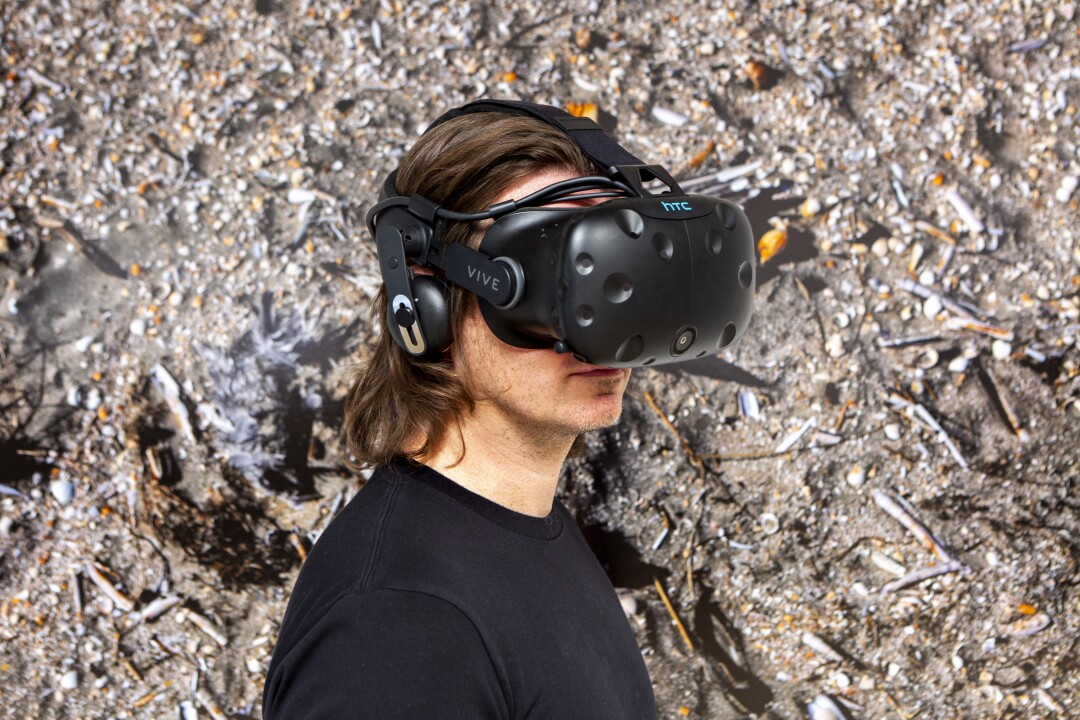
Keith Tolch at Artwork Fact Studio in Eagle Rock. The artist states he established a digital fact space motivated by his recollections, inadvertently mapping out his mind.
(Gabriella Angotti-Jones)
And during the coronavirus outbreak, as lifestyle hubs are shuttered and hungry art enthusiasts shelter at property, digital fact art-viewing at museums — and art-shopping for at galleries — has taken off.
Virtual fact, nevertheless, is even now a mystery to substantially of the present-day art establishment and there’s even now a slew of unanswered inquiries about how to show, gather and monetize VR art. Is there a accumulating industry for it? How do you rate the functions? How would collectors exhibit VR functions in their households? Are the functions originals or portion of a limited version? What is to avoid a person from reproducing or reselling a work created with computer software and code as opposed to paint and canvas? And, ultimately: What can make it art as opposed to computer programming?
LACMA curator Britt Salvesen, who organized the museum’s “3D: Double Vision” exhibition final 12 months, inquiries the longevity of VR artworks: “How do you preserve, refresh and maintain these types of functions when the hardware and computer software is inevitably generally altering? And if you purchased a VR work now, would you be equipped to enjoy it in 2025 — would the programs even now work?”
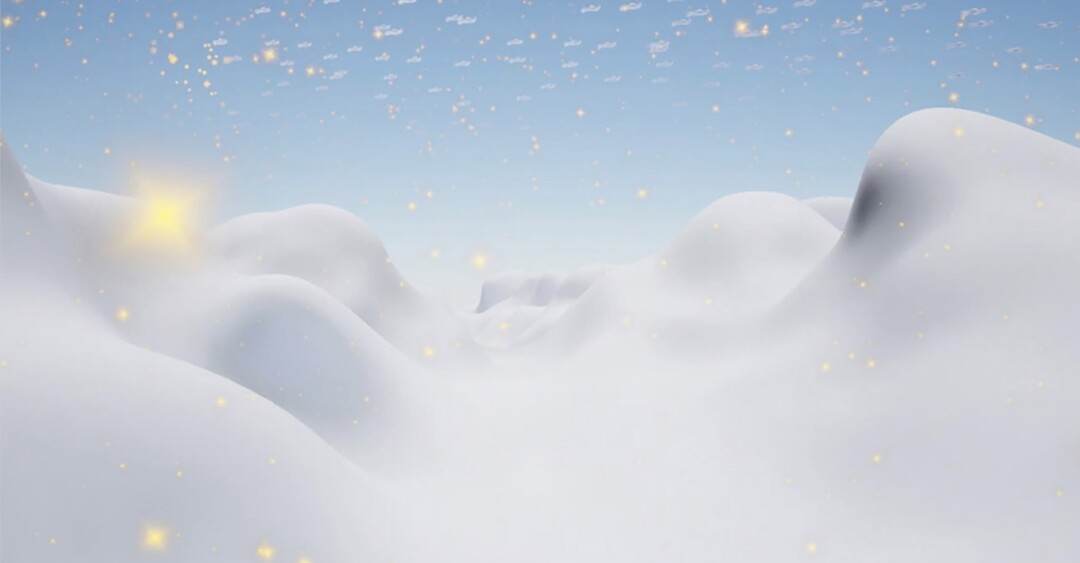
A even now from Joe Sola’s digital fact artwork, “Changing Room,” which he generated in collaboration with Artwork Fact Studio.
(Joe Sola and Honor Fraser gallery)
Masi and Imai hope, if not to solution all of these inquiries, then to wade all-around in them for a although. The two fulfilled about 4 decades back at a Los Angeles County Museum of Artwork patron group event ahead of hatching the plan for ARS. Their business enterprise model is not unlike that of the L.A.-dependent artists’ workshop and wonderful art lithography publisher Gemini G.E.L., which starting in the 1960s and ’70s facilitated experimentation among artists, exhibited and offered their work and served gas a nationwide printmaking revival in the approach.
In its place of ink, paper and metal presses, nevertheless, ARS offers artists with VR “rigs” — higher-close computer systems outfitted with VR computer software, exhibit monitors, headsets, wall sensors and remotes — which run about $10,000 apiece. And ARS — which hasn’t offered just about anything nonetheless and is funded by Masi and Imai (but for a single tools donation valuing $5,000) — states it does not intend to just take a reduce of product sales of the functions, which are creator-owned.
“It’s really a philanthropic thing for us,” Imai states. “I gave a little little bit of money to [neighborhood museums] but I understood: They really don’t really have to have my little money, I’m not Eli Broad that can really make a difference. I wanted to do some thing that was additional immediate, with the artists.”
ARS loans the VR rigs to its artists, who preserve them at their households or studios for as extended as they have to have to finish the work Tolch kept his additional than a 12 months although training himself to use the game motor computer software by means of on-line tutorials. ARS then shows the new VR work at its studio, or it facilitates an exhibition at a gallery or one more art space.
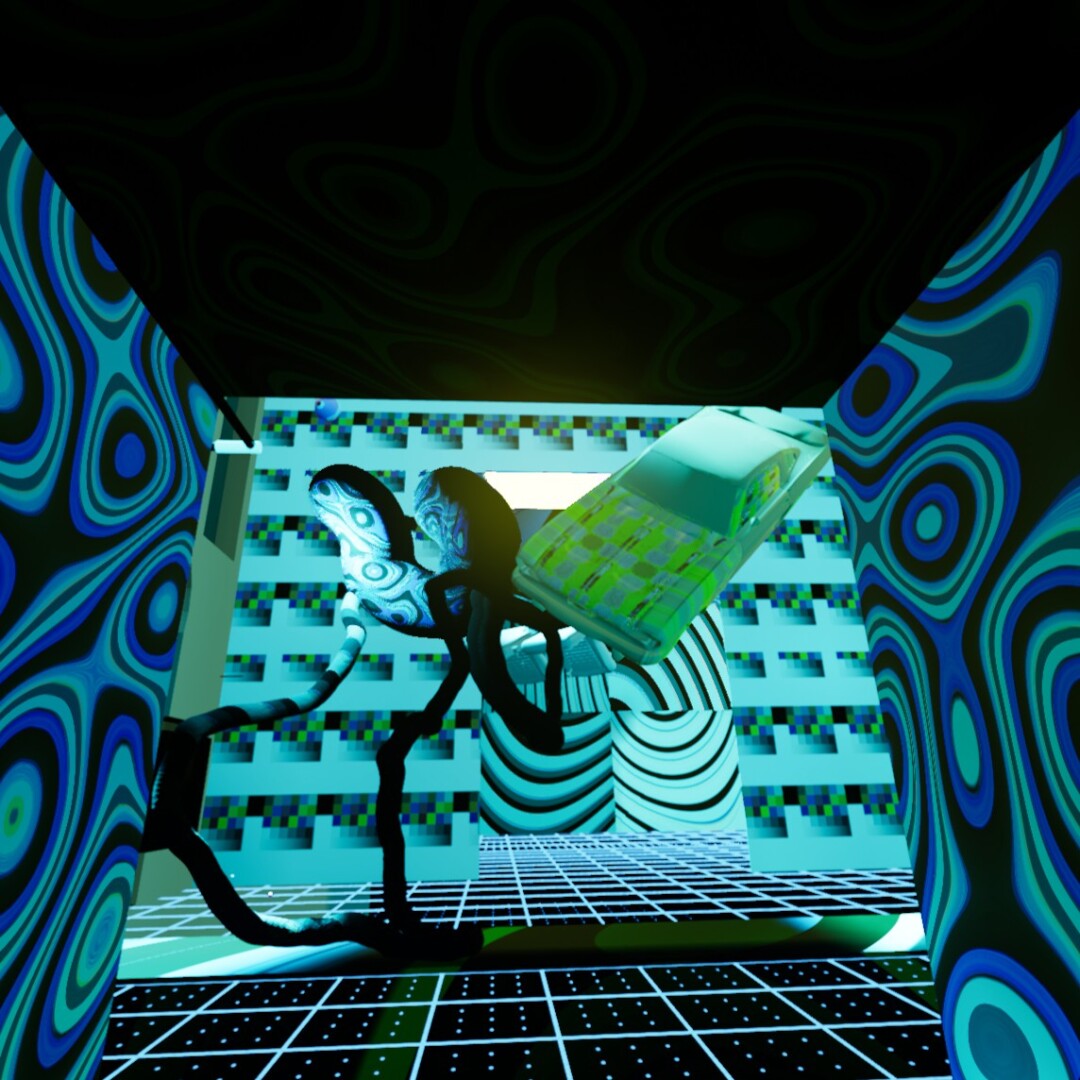
Artist Keith Tolch states working in VR permitted him to get deeply personalized, to “explore my identification and my heritage that I’m not really distinct on.”
(Keith Tolch)
Tolch showed his VR work, which brings together even now photography, three-D modeling, screenshots, animation and photos of his paintings, at ARS in February 2019 the piece was exhibited alongside his substantial-scale oils on canvas, figurative abstraction functions he states are “about portray,” if considerably impersonal. The VR work, with its amalgam of sourced imagery, permitted him to go further, to “explore my identification and my heritage that I’m not really distinct on,” he states.
“It’s an architectural, biological natural environment that you can stroll all-around in and glance at all these artifacts from my earlier: photographs of my grandfather, pencil drawings my terrific-grandma did. There are voices. It’s almost like a storehouse of things that I know and I keep in mind.”
It’s portion portray, portion filmmaking, portion sculpture, portion collage, portion general performance, portion sound, portion animation. It’s the closest resource that I’ve experienced that matches my creativeness.
Artist Joe Sola
Joe Sola spent more than a 12 months conceptualizing and sketching his VR piece, “Changing Room,” ahead of figuring out the technological innovation with artist-animator Filip Kostic. The work debuted at Honor Fraser gallery in Culver City in January alongside Sola’s enormous gold-hued pigment prints. At the opening, visitors waited in line up to thirty minutes to don a headset and descend into Sola’s animated VR planet, which explores violence, sexuality and race in well known lifestyle, with O.J. Simpson as the viewer’s co-pilot.
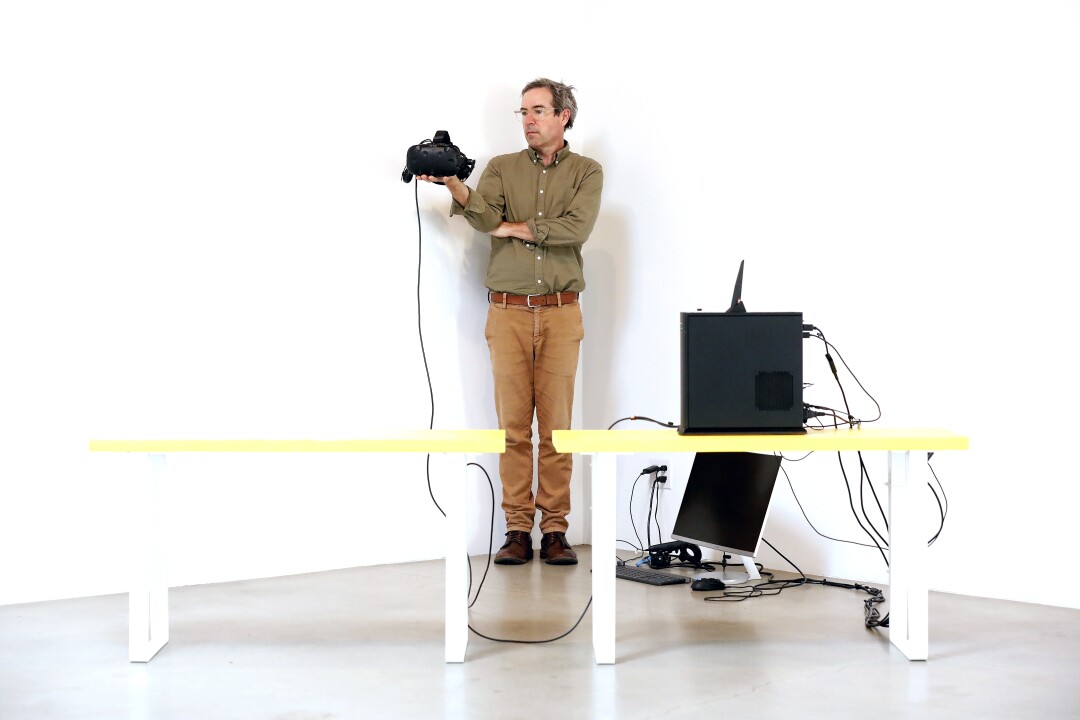
Artist Joe Sola at Honor Fraser Gallery in Los Angeles.
(Gary Coronado / Los Angeles Periods)
All through the reception, VR explorers took turns interacting with the piece in the corner of the gallery, which added a general performance art element to the area. Passersby gawked as headset-clad VR contributors, blind to their genuine-planet surroundings, jerked their bodies all-around awkwardly, groping at imaginary objects in the air.
“It’s portion portray, portion filmmaking, portion sculpture, portion collage, portion general performance, portion sound, portion animation,” Sola states of VR. “It’s the closest resource that I’ve experienced that matches my creativeness.”

When viewers descend into Joe Sola’s digital fact artwork, “Changing Room,” O.J. Simpson serves as their co-pilot.
(From Joe Sola and Honor Fraser gallery)
How to sell the functions, nevertheless, is even now becoming finessed, Masi states. Tolch’s piece is an version of 5 Sola’s, of a few. The artist and studio just about every preserve a copy as perfectly. An artist’s evidence from just about every version will be donated to a museum or cultural institution the first collector to buy a work from an version will get to title the recipient, Masi states.
“The plan is for it to be someplace exactly where it’s superior for the artists’ work to be observed,” he states. “So museums is what we’re pushing.”
Acute Art’s Birnbaum states that the problem of how to version and distribute VR work is even now very substantially up in the air. Even though compact editions could be ideal for some functions, his corporation — which hasn’t commercialized any VR art nonetheless — is targeted as an alternative on exhibition models and the “democratizing potential” of the medium.
Earlier this 12 months it generated a VR movie by Chinese artist Ai Weiwei. The piece, addressing migration and animal legal rights, released on the Guardian’s YouTube channel Jan. thirty and got about 100,000 sights its first day — but the work is not for sale.
“We haven’t found the model nonetheless to sell these functions,” Birnbaum states. “It appears it should really be art for absolutely everyone and it should really be dispersed in substantial editions, like Netflix. But it’s unclear exactly where it will sit in the art industry and in the institutional context.”
But are the functions art?
“My litmus check,” Baker Cahill states, “is how substantially conceptual rigor has long gone into it — why are you even working with this medium, why VR and not portray or sculpture or immersive theater?”
ARS has two VR parts in the functions with L.A. artist Brian Bress and San Diego-dependent Victoria Fu. Both parts intention to check out the medium, conceptually.

Brian Bress in his Glassell Park studio on March 2. The artist is putting on a mask, gloves and costume he printed on canvas and makes use of in his artwork.
(Francine Orr / Los Angeles Periods)
Bress has spent the final decade building display-dependent work involving costumes, sets and his have art-building performances — all of which he turns into wall-mounted movie installations. His VR piece will area viewers “in a digital art-building space,” he states, “where they can slice and dice a canvas to build portals to other spaces that have additional imagery within of them.”
Fu, whose work seems in the collections of LACMA and the Whitney Museum of American Artwork, states her VR piece will transportation viewers to a domestic inside and address purchaser life-style needs although also taking part in with the three-D space.
“My movie installations address how viewers situate by themselves in narrative space,” she states of preceding work. “This, VR, is a total other move. It’s undoubtedly international to me, an experiment.”
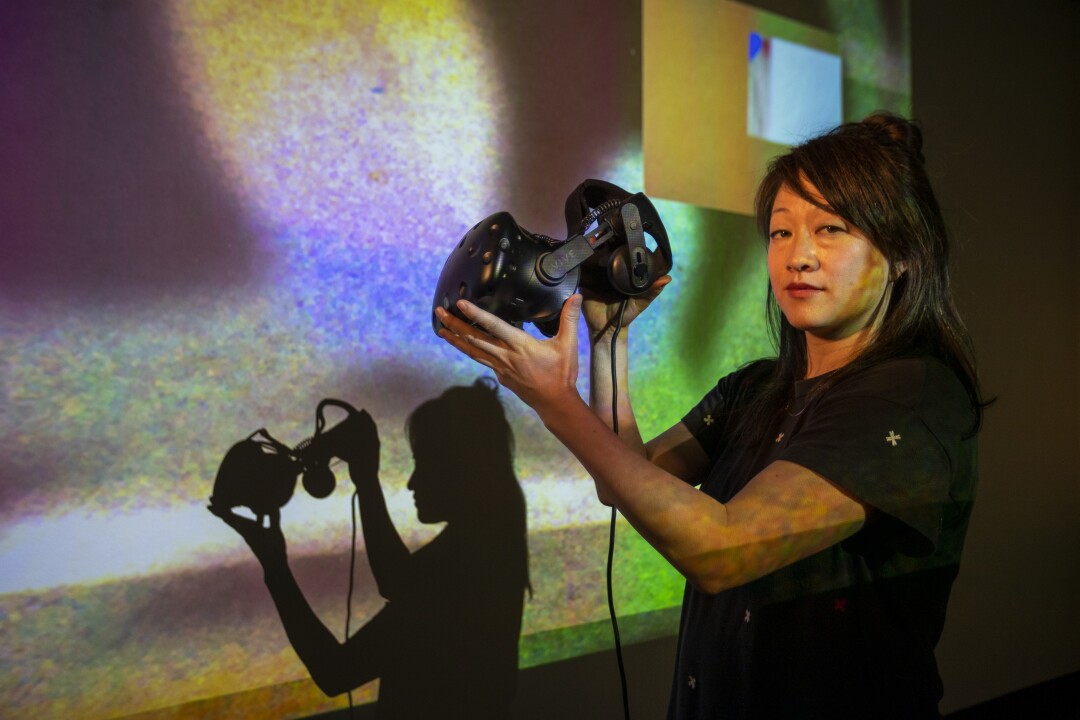
Artist Victoria Fu with an impression in development that will consist of VR features.
(Allen J. Schaben / Los Angeles Periods)
This early gestation stage of the experiment is primarily enjoyable, Imai states, “waiting to see what comes out.”
“Giving these equipment to artists can give us a glance into the long run,” he states. “Maybe it’s a cautionary tale, it’s possible it’s a wonderful planet.”